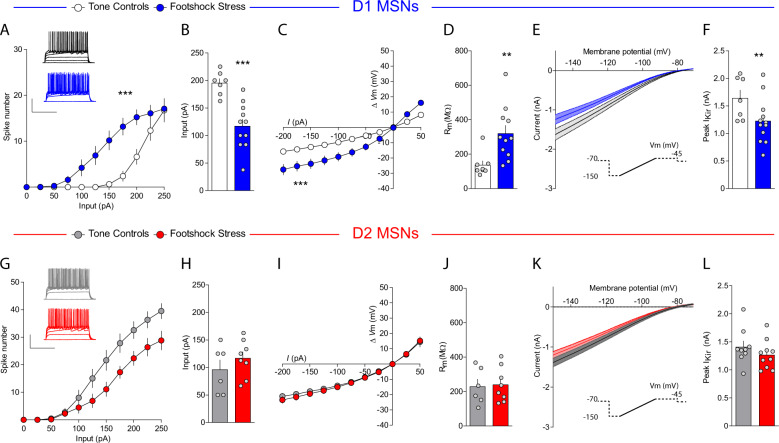Fig. 5. Footshock stress increases intrinsic excitability of D1-MSNs via reduced inwardly rectifying potassium channel activity.
a Input–output curves of action potential firing in D1-MSNs from control (white) and mice exposed to footshock stress (blue) (n = 9–15 per group; two-way ANOVA; treatment × current input interaction; F(10, 220) = 5.15, p < 0.0001). b Rheobase in D1-MSNs (n = 7–11; t-test; t(16) = 4.58, p = 0.0003). c Current–voltage relationships in D1-MSNs (n = 8–12 per group; two-way ANOVA; treatment × current input interaction; F(10, 180) = 8.26, p < 0.0001). d Input resistance in D1-MSNs (n = 8–11; t-test; t(17) = 3.11, p = 0.006). e Ba2+-sensitive IRK currents in D1-MSNs from tone controls and footshock stress mice. f Peak IRK currents in D1-MSNs (n = 7–12; t-test; t(17) = 2.28, p = 0.036). g Input–output curves of action potential firing in D2-MSNs from control (gray) and mice exposed to footshock stress (red) (n = 8–10 per group; two-way ANOVA; treatment × current input interaction; F(10, 160) = 3.48, p = 0.0004). h Rheobase in D2-MSNs (n = 8–10 per group; t-test; t(12) = 1.02, p = 0.33). i Current–voltage relationships in D2-MSNs (n = 6–8 per group; two-way ANOVA; treatment × current input interaction; F(10, 120) = 0.18, p = 0.997; treatment main effect F(1, 12) = 0.38, p = 0.55; current input main effect F(10, 120) = 110.99, p < 0.0001). j Input resistance in D2-MSNs (n = 6–8; t-test; t(12) = 0.20, p = 0.85). k IRK currents in D2-MSNs from tone controls and footshock stress mice. l Peak IRK currents in D2-MSNs (n = 9–10; t-test; t(9) = 1.085, p = 0.2930).

